Park Identified Research Needs
What are the research needs of the parks in the Great Lakes Research and Education Center Network?
Overall, there is a need to:
- Clarify the climate record and assess current climate change impacts to the parks' economic and environmental future;
- Develop climate change modeling and research in the parks;
- Research the role of environment and wildlife in human health;
- Conduct a water census to quantify and forecast adequate water for the future;
- Inventory and monitor needs of biota, specifically of microbiota, invertebrates, and nonvascular plants
The list of specific research needs and issues gathered from the staff at individual parks and park researchers (updated on 1-21-14) include the following:
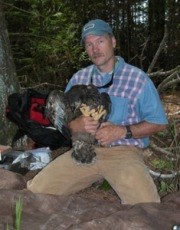
Craig Thompson, Institute for Wildlife Studies
Apostle Islands National Lakeshore:
- Assess the impact of overabundant white-tailed deer on rare plants;
- Assess threats to fish from invasive species and viral hemorrhagic septicemia virus (VHS);
- Determine changes in the bat population that have occurred since the last inventory in 2003, potential impacts of white-nose syndrome and any management actions that can be taken to protect bat populations;
- Understand how climate change is affecting park resources:
How are increasing wind speeds impacting sandscape and forest vegetation in the park?
Is dominant wind direction changing and interacting with wind speed to effect certain locations over others?
What is the impact of increasing storminess on the parks geological resources such as bluffs, rock formations, and sandscapes?
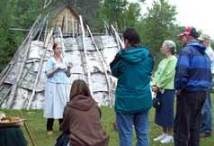
Grand Portage National Monument:
- Stream bank erosion threatening cultural resources;
- Habitat fragmentation by roads and lakeshore encroachment;
- Restoration of black ash, Fraxinus nigra, being decimated by Emerald Ash Borer, using genetic rescue techniques in both cultural and natural landscape contexts
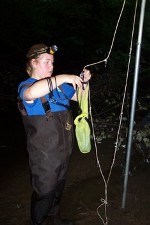
Photo by Joy Marburger
Indiana Dunes National Park:
- Impacts of habitat fragmentation;
- Encroachment by development;
- Rare species;
- Historic and current water and soil contamination;
- New invasive species;
- Change analysis using GIS showing land use, vegetation, soils, hydrology, and fire history;
- Coastal sand movement and its impacts across the shoreline;
- Inventory of non-native aquatic plants;
- Inventory of nonvascular plants;
- Impacts of overabundant deer and raccoon on native plants and animals;
- Effectiveness of wetland restoration in improving water quality;
- Microbial communities in various habitat types;
- More detailed analysis of the population genetics of the park's biota;
- Role of vegetation in stabilizing dunes;
- Successful techniques to restoring disturbed lands including establishment of native plant species;
- Evaluation of various control methods and impacts of restoration techniques after removal of invasive plant species;
- Impacts of restoration on microbiota in various habitats;
- Framework for implementing adaptive management;
- Conservation strategies for preserving biodiversity in the context of landscape fragmentation and climate change
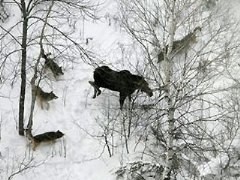
Isle Royale National Park:
- Aquatic invasive species from ballast water and park visitors;
- Inventory of climate change impacts to vegetation;
- Impacts of vegetation changes on moose and fish populations;
- Protection of coaster brook trout, lake trout, and whitefish populations which are potentially threatened by VHS virus;
- Better understanding of the biology and genetics of the American marten
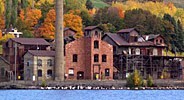
Keweenaw National Historical Park:
- Bedrock features (NNL nomination);
- Insect pests of structures and museum collections;
- Economic history of the Michigan copper mining industry, with emphasis on its role in the National and international copper market;
- Purpose, role, membership and significance of women's clubs and organizations in the Copper Country, 1840s-1920s;
- Environmental effects of copper mining and processing;
- Uses and trade of copper in prehistoric North American Indian societies and sites where it is found today;
- Pre-settlement vegetation cover on the Keweenaw Peninsula;
- History of Calumet's benevolent societies and their role in acculturation;
- The Keweenaw's role in the North American fur trade;
- Impacts of Historic District preservation ordinances;
- Understand mining history, land use changes, and environmental history;
- Improve biological surveys and inventories of the park;
- Archeology to determine the prehistory of the park;
- Shoreline changes along Portage and Torch lakes
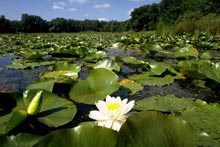
Mississippi National River and Recreation Area:
- Baseline inventory and monitoring of bat species present in park using acoustic monitoring and open source software to identify bat calls;
- Annual monitoring of percent native vs percent non-native vegetation at Coldwater Spring restoration site;
- Monitor wildlife species richness, occupancy and abundance using remote camera surveys (with particular interest in coyote and river otter);
- Monitor cottonwood regeneration in floodplain forests and in experimental plots
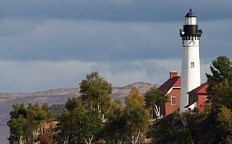
Pictured Rocks National Lakeshore:
- Threats from invasive plant and animal species (spotted knapweed, purple loosestrife, Phragmites, hybrid cattail, VHS, beech bark disease);
- Habitat fragmentation from development within legitimate buffer zones;
- Effects of climate change;
- Status of coaster brook trout;
- Connecting park islands with other high quality natural areas for long-term genetic viability of species
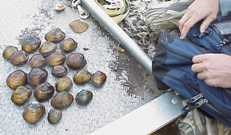
St. Croix National Scenic Riverway:
- Strategies to protect forests from non-native insect pests;
- Methods to stop Asian Carp invasion;
- Biocontrol methods for invasive plants;
- Investigate impacts from visitor use/carrying capacity (esp. as it relates to camping and tubing on the river)
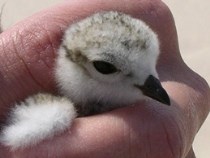
photo by Alice Van Zoeren
Sleeping Bear Dunes National Lakeshore:
- Continued monitoring of endangered piping plover;
- Climate change vulnerability analyses, especially for cold water species;
- Effects and remediation of American beech affected by beech bark disease, including selection and breeding of disease resistant trees;
- Biocontrol methods for controlling aquatic invasive species;
- Restoration techniques for the old-field successional tracts in the park, which must be maintained in open grassland landscape, but with native species;
- Visitor impacts to the dunes;
- Geological monitoring of changes in the dunes;
- Hydrological assessments;
- Decision tree for water management and visitor use impacts of the Crystal River and Glenn Lake, including thresh-holds for visitor impacts
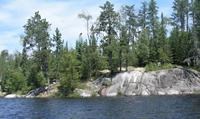
Voyageurs National Park:
- Effects/potential effects of climate change;
- Effects of artificial water level management on aquatic/semi-aquatic biota and invasive species;
- Ecology and management of exotic plants and aquatic animals;
- Effects of environmental contaminants on terrestrial and aquatic biota;
- Assess restoration of disturbed habitats;
- Restore fish communities to small lakes;
- Restore extirpated animals;
- Assess non-fire alternatives to forest restoration
Specific Climate Change Research Needs in Great Lakes Parks:
- Develop vulnerability assessments for individual species as well as habitats to incorporate into park management plans;
- Evaluate scale of climate change effects on species and communities from landscape to microcosm level: impacts of wind, precipitation, temperature on common as well as rare, threatened, and endangered species;
- Evaluate carbon budget in various habitats, vegetation, soil, especially for aquatic and wetland habitats;
- Evaluate experimentally how common and rare plant species respond to increased nitrogen and/or carbon dioxide;
- Evaluate legacy effects of past land use and air contaminants compared to current effects, for both species and community level functions;
- Evaluate and model landscape scale conversion of forest and savanna habitats by biological invasions (plant and animal) as they interact with climate change;
- Investigate the various factors and knowledge gaps affecting black oak savanna restoration;
- Develop efficient and cost effective methods to restore degraded areas of the park, based on restoration goals, habitat type, and potential for climate change adaptation and transformation;
- Evaluate funding and resources effort required to "save" a threatened or endangered species from extinction in the park under various climate change scenarios;
- Develop and/or obtain tools that can provide information on community structure and the ecological condition of habitats.
- Tools need to continue without ongoing funding - continuous, long term data collection is needed, possibly through existing inventory and monitoring programs;
- Evaluate impacts of physical and genetic isolation on various species of concern caused by landscape fragmentation;
- Investigate local adaptations of species and the geographic range of genetically similar ecotypes for restoration purposes;
- Evaluate soil organisms such as fungi and earthworms and determine their impacts to forest plant species and soil carbon sequestration;
Last updated: September 30, 2019
